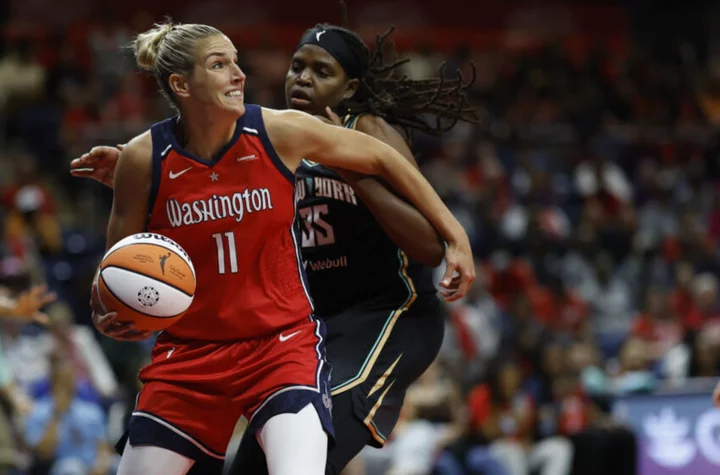
Mystics vs. Aces prediction and odds for Friday, Aug. 11 (Washington doomed by injuries)
The Las Vegas Aces rebounded nicely from a loss to the New York Liberty earlier this week, and now they find themselves as massive favorites against the Washington Mystics on Friday night.Washington is in a tough spot, with star Elena Delle Donne injured, and it’s led to the team catching ...
1970-01-01 08:00
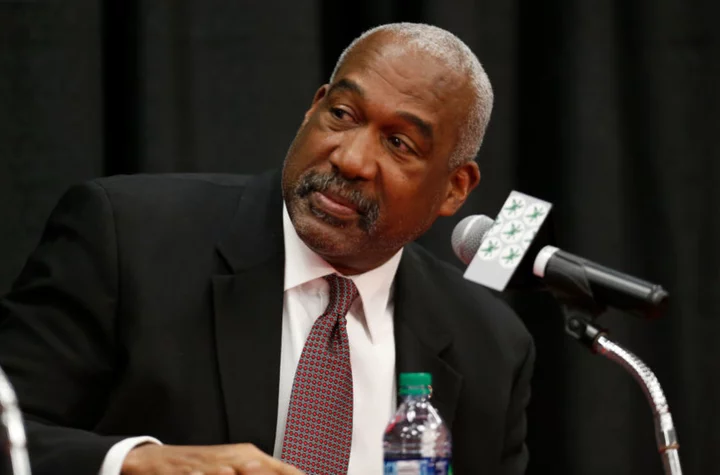
Ohio State AD reveals the one key factor that led to Pac-12 demise
Ohio State athletic director Gene Smith explained why the Big Ten was eventually able to add Oregon and Washington, resulting in the hostile takeover and eventual death of the Pac-12.Mo money, mo problems...It was all a dream. I used to watch Pac-12 After Dark! Now we are left with a Pacific...
1970-01-01 08:00
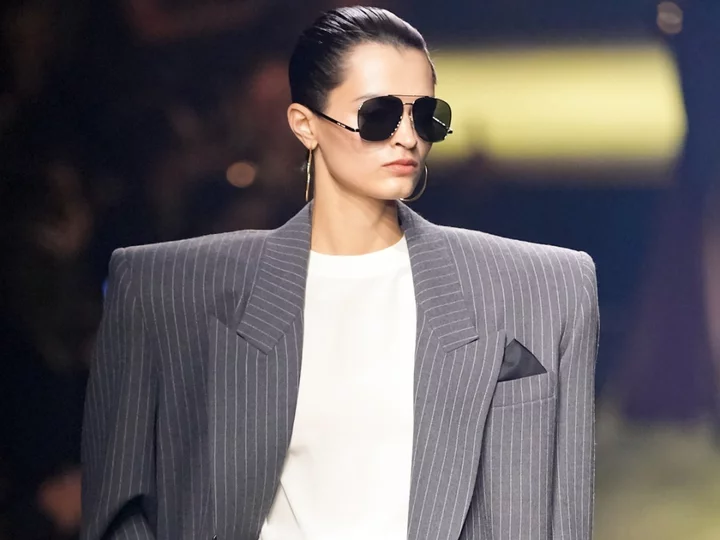
Menswear has made women feel confident for centuries, but will the gendered separation ever cease to exist?
I remember the day I realised the embodiment of my persona was a long-sleeve ironed shirt with only the collar close-lipped. Initially, I gravitated toward the crisp button-down for function, as my former workplace tended to emit heaps of chilly air, but a spontaneous feeling compelled me to button the top, leaving the rest of the shirt open. It may have been, in part, my obsession with wanting to define my look outside of popular construction or how this new silhouette framed my figure. Regardless, the androgynous piece of clothing left me feeling more confident than ever before. A clothing rack full of these formal tops sits perpendicular to my bed now, and I wear them strategically closed with almost every outfit. I couldn’t tell you exactly what it is about them that makes me feel alluring and powerful, but my style hasn’t been the same since. Now more than ever, women are setting aside archival forms of womenswear for the structure of men’s clothing, assuming their most confident, authentic selves. Mini denim shorts, bodycon dresses, and micro skirts are being swapped for baggy jorts and boxers. Individuals are donning contrasting proportions, taking risks, and exuding self-assurance in items that have historically been deemed representative of masculine codes in Western fashion. In doing so, women are diminishing the gap between gendered collections. According to Hazel Clark, professor of fashion studies at Parsons School of Design, women initiated the crossover between menswear and womenswear in the early 19th century when they started working in coal mines and riding horses. A working-class of women deliberately assumed the male dress code, whether business or activity related, because womenswear constricted their necessary movement with tight bodices and corded petticoats. Here, function and ability took precedent over society’s expectation of femininity as more opted to dirty a pair of trousers instead of their voluptuous gowns. Heading into the Second World War and the 20th century, the design gap minimised further when women’s roles in society advanced. In the 1940s, men were forced to leave their factory jobs for war, leaving their female counterparts to fill their positions. For women to be respected in the workplace, they mirrored the male look and wore the classic pantsuit. Francesca Granata, professor of fashion theory and history at Parsons, identified the “power suit of the 1980s” as “a classic instance of women trying to access men’s power in the workplace by wearing an outfit which imitated menswear and with wife shoulders: the ideal male physique.” She noted: “Yet the wide-shouldered suit jacket was often rendered appropriately feminine by being paired with a skirt.” With this came an influx of women wearing these masculine codes outside of the workplace. Though my grey dress pants from the men’s section of a closet sale were welcomed into my weekly rotation almost immediately, it took a lot of courage and self-assurance back then for women to wear similar pairs, just like it did for them to wear miniskirts when both styles were socially unacceptable. The initial need for “businesswear” transformed into desired style even if it meant a woman could be labeled as “inappropriate” or be refused at the door of an establishment. Looks from men turned to public disapproval, but that didn’t stop the progression of women dressing in menswear at all. “Although baggy clothing has been acceptable for men for quite some time, especially in the US, unlike older appropriation of menswear which were often adapted to be more skintight or revealing or somewhat rendered ‘feminine’ baggy clothes question the old dictum that women’s bodies should be on display for the male gaze,” Professor Granata remarked. In other words, this “sense of power dressing” left the confines of the office environment alongside any lingering thought to the heteronormative gaze. Fast forward to the early 21st century, when the groundwork for this fashion fusion had been laid in terms of utility and preference. As society began to understand sexuality and gender fluidity, non-gendered collections became increasingly popular. Designers became more proactive about creating androgynous clothing that didn’t need to be separated into the two typical identifiers: women and men. “Fashion must get to a point where we don’t have to talk about gender,” designer and creative director of Loewe Jonathan Anderson wrote in Amelia Anderson’s “What We Can Do Better” in 2021, nine years after he introduced the first transgender collection for his eponymous brand. “Fashion can be a way to experiment with character or to work out your identity, and I believe that clothes can have a protective role on a more emotional level.” Anderson’s obsession with how queer individuals dressed contributed to his perception that fashion can be used to “break the rules”. To him, clothing is a marker of individuality and subculture, which is what motivates him to create designs for people to express themselves free from outdated norms. Between boxy, textured T-shirts, bouncy blouses, and tailored high-waisted pants, Anderson’s worked to incorporate rival style cues even in his gender-specific collections. “Clothing is full of paradoxes, but ultimately it can empower us - and in a world that has historically taken power away from queer people, that can be vital,” he proclaimed. “In a world that often expects certain things for certain people when it comes to clothes - where society wants men, say, to wear some things, and women to wear others - I sometimes question why I do menswear and womenswear shows. But for me, it’s not about classifying people, it’s about using these categories as ideas - ideas to borrow from.” As designers helped bridge the gap, celebrities like Hailey Bieber and Bella Hadid have been seen being more experimental in campaigns for big name brands as well as in their personal street style. The 26-year-old Rhode Skin founder has been a recognised ambassador for the French fashion house, Yves-Saint Laurent, a company which has irrevocably impacted womenswear since their 1966 creation of a menswear-motivated tuxedo for women called “Le Smoking.” Both Bieber and Hadid blend feminine and masculine codes in everyday wear, leading the craze for oversized jean shorts and lengthy vintage sportswear paired with dainty ballet flats and platform boots. Other brands, such as Uniqlo and Thom Browne, design collections labelled and distributed as menswear and womenswear, but the items are still being bought and worn interchangeably. “It’s hard to explain,” Marissa Petteruti, senior menswear designer at Rag & Bone, tells The Independent when asked why she feels more assured in men’s clothing over feminine-labelled pieces. “I’ve always just felt more comfortable in, you know, oversized men’s shirts and pants. I kind of always have gravitated toward men’s fashion. I remember when I was a kid, my parents used to tell me: ‘You have to wear a skirt one day a week.’ I never saw why I couldn’t wear whatever I wanted. So maybe part of it became going against what my parents wanted me to do.” Petteruti has cultivated a closet full of suit pants, designer shirts, and vintage bomber jackets in pursuit of the perfect capsule wardrobe and collection of exclusive ready-to-wear. Ever since she attended the Parsons School of Design, pressure and expectation were absent from her style. Here, Petteruti was drawn to the serenity of menswear, and she appreciated the simplicity of its form more than women’s clothing. Her eyes wandered to streetwear brands such as Supreme and Hood-by-Air because the concept of a lux T-shirt intrigued her, and oversized pieces were pleasing. When she started at Rag & Bone, she learned that men’s tailoring was more extensive, but even so, the trends were ephemeral - meaning the pieces were inherently timeless. Womenswear detailing such as peplum cuts, scallop or lace trimming, floral embellishments, and sheer fabrics tend to cycle through seasonal collections more frequently than the stylistic choices and material preferences within menswear. The classic button-down may be presented in a specific range of colours depending on whether it’s fall or spring, but the shape and design stay the same. In other words, womenswear is more likely to follow suit with trends. Industry leaders and A-listers embracing a more avant-garde mindset in ready-to-wear and street style begs the question of whether brands will ever officially scrap the formal separation of womenswear and menswear. “Why do they have to be called ‘men’s clothing’? Just ‘cause you put the buttons on one side of the shirt and the fly on one side of the shirt and the reverse. It’s, it’s silly to me,” Petteruti agreed when asked if she thought the division was necessary. “I mean, the interesting thing about fashion now is at any given moment, it’s so diverse. We don’t all wear the same things to be in fashion. If we wanted to be in fashion, I mean, regardless of our sort of age or gender, you know, they’re like lots of different choices we can make, depending on the kind of the group we associate with or who we follow,” Clark explained. But Clark doesn’t believe concrete separation is on the horizon, due to the sizing and proportional differences between a man versus a woman. “Men’s and women’s bodies are different. You know, I mean, that’s part of it. Size and physique will prevent womenswear and menswear from being entirely infused with one another,” she proclaimed. Petteruti would argue that there’s potential. Already, she’s seen Rag & Bone mix more feminine codes into their menswear designs with varying fabrics and silhouettes. Being that inspiration is often plucked from the demand and visibility of others who motivate obsessions, the runway no longer dictates style fads. This means it may be expensive on the backend for companies, but we could see collections move away from the label if consumers want more androgynous, unisex pieces. As for Granata, she interprets the division of womenswear and menswear as already having been “tenuous,” which is exactly why women found themselves gravitating toward masculine codes to begin with. Read More How hip-hop went from being shunned by big business to multimillion-dollar collabs Dior celebrates 5 years as designer in gender-fluid Paris men's show Womenswear leads the way as Ted Baker sales soar
1970-01-01 08:00

John Lydon on punk's beginnings: 'To wrap it around Patti Smith. It’s so wrong!'
John Lydon says Americans are "wrong" to claim Patti Smith was the first artist to influence punk rock.
1970-01-01 08:00
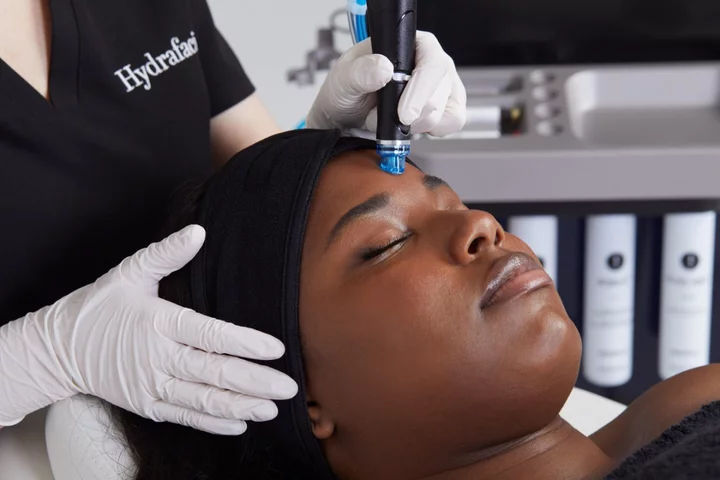
What is the best type of facial for your age range?
If you’re a dedicated skincare junkie, you might be thinking about how you can get that glow beyond your night-time skincare routine. Facials can be an appealing way of targeting any concerns you might have and giving your skin a bit of professional care. But they’re undoubtedly expensive, and generally more of an investment than buying a pot of moisturiser. Naturally, you want to spend your money as wisely as possible – and if you do have the extra funds for a facial, you don’t want to waste it. So, what’s the best type of facial to get for your age group? In your 20s “Facials and skincare choices in your 20s should be preventative; aiming to optimise your skin’s health and supercharging collagen and elastin levels,” says Dr Thuha Jabbar, aesthetic doctor and founder of Almas Dental. “Hydrafacials are a great, non-invasive skin boosting treatment that deep cleanse the skin, brighten and reduce fine lines. Chemical peels and other non-invasive facial treatments are also great to improve skin tone and keep breakouts at bay.” Dr Sophie Shotter is also a fan of Hydrafacials (which start from £125 depending on clinic and location – available in over 1,300 UK and Ireland providers). They provide a deep clean, followed by extracting any impurities then moisturising the skin. Shotter says they can “help to give the skin a deep clean, minimising the risk of breakouts. LED [light therapy facials] is also an excellent choice. Many facialists will combine techniques for best results.” Dr Radmila Lukian, dermatologist at the Lucia Clinic, recommends microdermabrasion for people in their 20s – a process where fine crystals and a vacuum are used to remove dead skin cells. She says it’s “a great treatment for brightening dull skin and reducing pigmentation. Perfect for young adults.” In your 30s When you hit your 30s, this is the time when Shotter recommends “starting to think about upping the ante” with your skincare. She recommends facials which incorporate microneedling – a process where small needles pierce the top layer of your skin. “We often start to notice the early signs of ageing, as collagen loss kicks in through our 30s, and these treatments can help to stimulate collagen production leading to significant improvements in skin texture,” Shotter says. Lukian recommends a facial that incorporates dermaplaning – where a scalpel removes hair and dead layers of skin – which she says can help “combat free radical damage, stimulate collagen and improve skin texture”. In your 40s When you reach your 40s, Lukian suggests LED light therapy and laser skin resurfacing treatments, as they “become more relevant to target wrinkles, stimulate collagen and improve skin elasticity”. She adds: “Laser skin resurfacing uses targeted laser energy to promote collagen production – revealing healthier, younger-looking skin.” Kim Kardashian, 42, is a fan of laser facials, and often posts about her treatments on Instagram. Jabbar adds: “Your 40s is a great time to try laser treatments, to reduce the visibility of wrinkles and boost the overall health and appearance of your skin. From laser skin resurfacing treatments to IPL [intense pulsed light] facials that reduce hyperpigmentation and sun spots, lasers are a versatile and non-invasive option which can restore a youthful glow to your skin.” In your 50s and beyond “In your 50s and beyond, keeping focused on collagen stimulation with similar approaches to our 40s certainly helps a lot,” says Shotter. “But in our 50s, we often start to notice many more visible signs of ageing, including pigmentation and skin wrinkling (elastosis). Using deeper chemical peels or resurfacing laser techniques, which may carry a little downtime, but are worthwhile for the results.” For this age range, she says skin hydration “is also often a higher concern than in younger years”, so hydrating facials are an excellent choice too. While Hydrafacials are great in your 20s, they’re equally beneficial in your 50s and beyond – singer and actor Jennifer Lopez, 54, recently collaborated with the brand for her own ‘JLo Beauty Booster’ that can come as part of the treatment.
1970-01-01 08:00

Flash flood in China kills five villagers who were herding sheep
BEIJING A flash flood in northwest China on Thursday night killed five villagers who were in the hills
1970-01-01 08:00

7 Facts About Polka Dots
The pattern is named after the European dance craze, but what exactly the dots have to do with polka is a bit of a mystery.
1970-01-01 08:00
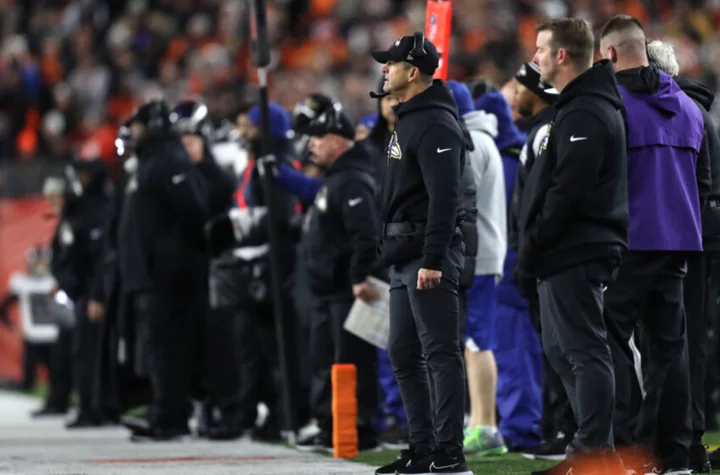
NFL Rumors: Could Ravens fix pass rush with blockbuster trade?
ESPN's Seth Walder suggested that the Baltimore Ravens make a blockbuster trade with the Washington Commanders to bolster their pass rush.The Baltimore Ravens avoided catastrophe this offseason by signing quarterback and former NFL MVP Lamar Jackson to a monster contract extension. Before t...
1970-01-01 08:00
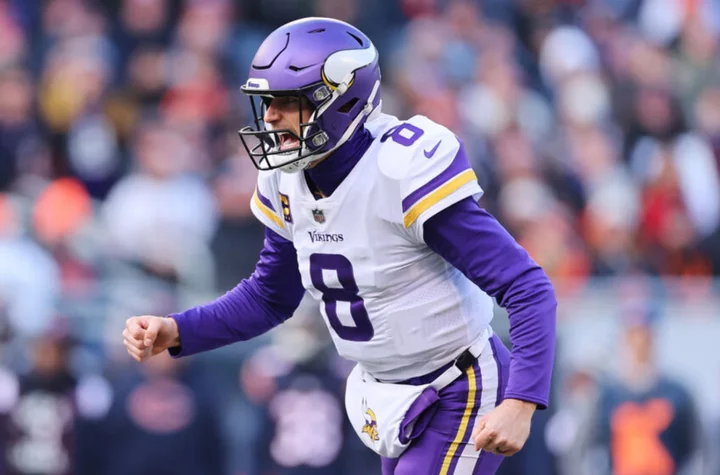
NFL Rumors: 3 teams that would beg for Kirk Cousins if Vikings move on
If the Vikings move on from Kirk Cousins with that possibility looming, these three NFL teams could be begging him to play QB for them.As many Minnesota Vikings fans have hoped for over the past few years, it seems as if Kirk Cousins' time in the Twin Cities might be coming to a close.O...
1970-01-01 08:00
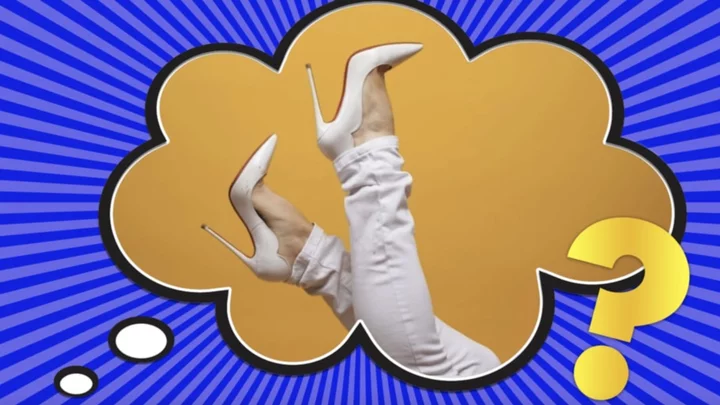
Why Can’t You Wear White After Labor Day?
The unofficial—but widely known—fashion rule can be traced back more than 100 years to some snobby millionaires.
1970-01-01 08:00
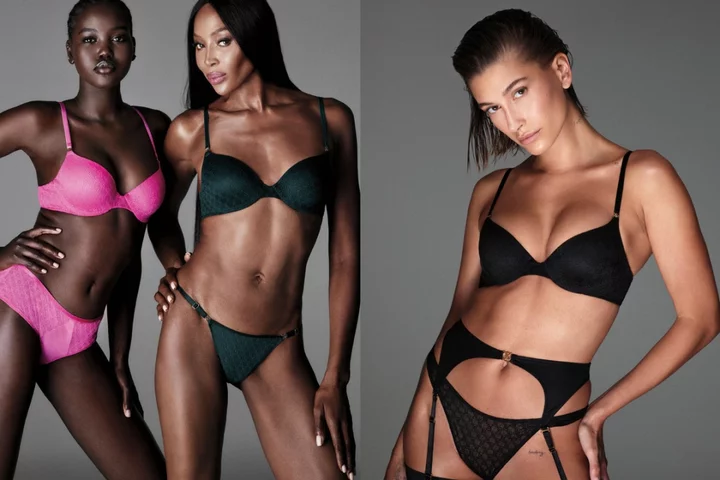
From Naomi Campbell to Hailey Bieber: All the top models and celebs in Victoria Secret’s new Icons campaign
Victoria’s Secret has launched a new campaign, which brings back models from the lingerie brand’s once-iconic “Angels” list alongside some newer faces. Launching its new The Icon by Victoria’s Secret collection on Thursday (10 August), the brand has also been teasing its film-style fashion show, the Victoria’s Secret World Tour, which will stream on Prime Video on 26 September. The campaign is part of the company’s major rebrand, after it was criticised for promoting unrealistic body image with its non-inclusive culture and accused of failing to protect its models against sexual misconduct. In response to the criticism, Victoria’s Secret got rid of its “Angels” team in 2021 and replaced it with the “VS Collective”, a group of seven successful women. The “Angels” were a ever-growing group of some of the most famous and in-demand models of the time, and included the likes of Tyra Banks, Rosie Huntington-Whitley, Chanel Iman, Heidi Klum, Lily Aldridge and more. As the brand strives to improve ethnic and body diversity among its models, it chose seven successful women to be part of the collective, not all of them fashion models. It includes models Adut Akech and Paloma Elsesser – who both feature in the new campaign – as well as journalist Amanda de Cadenet, athlete Eileen Gu, professional footballer Megan Rapinoe, actor Priyanka Chopra Jones, and model Valentina Sampaio. Victoria’s Secret released a black-and-white promotional video for its latest campaign on social media, revealing all the famous faces who are participating. Here are all the models in Victoria’s Secret new Icons campaign: Naomi Campbell While Naomi Campbell was a frequent face on Victoria’s Secret’s legendary fashion shows, she was never an Angel. As reported by People in 2020, the supermodel told The Sun that the brand “could not afford” her. Gisele Bundchen Gisele Bundchen became an Angel in 1999. She walked her last Victoria’s Secret Runway Show in 2005. Candice Swanepoel The South African model became an Angel in 2010. She has also previously been on the cover of the brand’s Swim Catalogue and donned the US$10m “Fantasy Bra” on the runway in 2013. Adriana Lima Adriana Lima was an Angel for nearly two decades before she hung up her wings in 2018. The year before she ended her time as an Angel, the Brazilian model was named “the most valuable Victoria’s Secret Angel”. Adut Akech Victoria’s Secret announced that Adut Akech had joined its family in June 2022. At the time, the South Sudanese and Australian model said on Instagram: “To be working alongside this brand that is continuing to transform to being a brand that advocates for all women, telling our stories and making the real positive changes that it should’ve done a while ago.” Emily Ratajkowski Emily Ratajkowski has previously modelled on Victoria’s Secret runways. Throughout her career, she has appeared on numerous magazine covers, including Vogue Australia and Sports Illustrated’s swimsuit issues, and has strutted down the runway for Marc Jacobs, Miu Miu, Dolce & Gabbana, Versace, and other designers. Hailey Bieber Influencer Hailey Bieber joined the VS Collective in 2021, although she has never walked a Victoria’s Secret show before. She wrote at the time: “I’m humbled to be in the company of these amazing women, many of whom have inspired me in countless ways with their own stories. I look forward to helping to create positive change as part of the VS collective.” Sui He Chinese model Sui He was the first East Asian model to open a Ralph Lauren show and only the second model of Chinese descent to walk Victoria’s Secret Fashion Show. Paloma Elsesser One of the “founding members” of the VS Collective, Paloma Elsesser describes herself as a “mixed Black fem in a size 14 body”. Speaking to the New York Times after she joined the group, Elsesser said it gave her a platform to “make radical change” and is lobbying for the brand to increase its sizing to XXXXXL. Read More Fake meat is dying, but that shouldn’t mean the end of veganism Lil Tay: Mystery surrounds ‘death’ of 14-year-old Canadian influencer Woman behind ‘not real’ plane tirade identified as marketing executive with $2m home Government urged to remove VAT from period pants How to get the ‘quiet luxury’ look on the high street Rihanna breastfeeds baby RZA as she launches Savage X Fenty maternity wear
1970-01-01 08:00

Wizards projected lineup and rotations heading into 2023-24 season
The Washington Wizards were busier than most teams over the summer, orchestrating trades centered on franchise cornerstones Bradley Beal and Kristaps Porzingis. Wes Unseld Jr.'s group will look extremely different next season.The Washington Wizards began the offseason with a house cleaning....
1970-01-01 08:00
